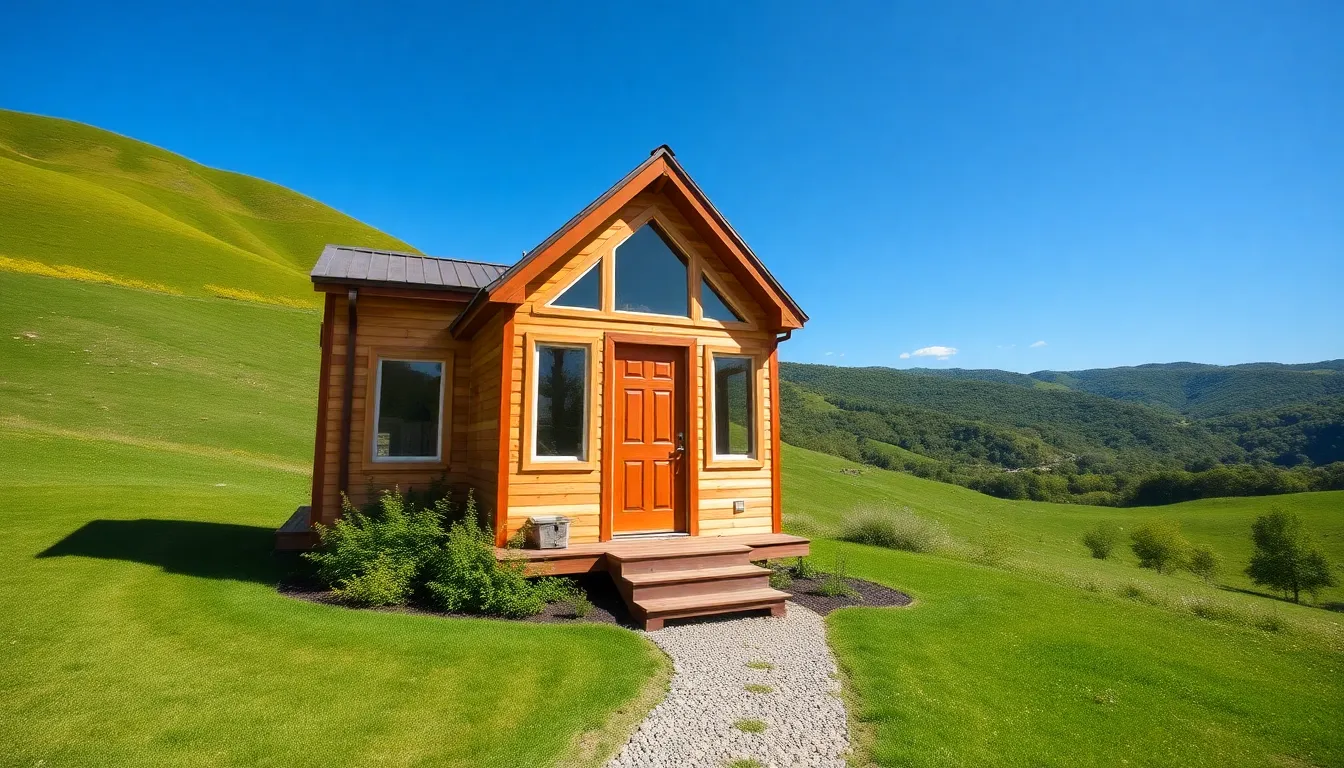In a world where even the tiniest of homes crave connectivity, setting up WiFi might seem like a Herculean task. But fear not, tiny home dwellers! With a little know-how and a dash of creativity, you can transform your cozy abode into a digital oasis. Who says you can’t binge-watch your favorite shows while sipping coffee in your pajamas?
Table of Contents
ToggleUnderstanding Tiny Home Wifi Setup
Tiny homes often present unique challenges for reliable WiFi connections. Ensuring a strong internet signal remains essential for comfortable living and maintaining productivity.
Importance of Reliable Wifi in Tiny Homes
Reliable WiFi provides connectivity for work, entertainment, and communication. With many tiny home residents working remotely, dependable internet becomes crucial. Streaming movies or attending virtual meetings requires a solid connection. Social interactions frequently rely on messaging apps and social media platforms, making access even more important. Strong WiFi also enables smart home technology integration, enhancing comfort and convenience. Consequently, having a robust network significantly improves the overall living experience in tiny homes.
Common Challenges in Tiny Home Wifi Setup
Setting up WiFi in tiny homes often presents several challenges. Limited space might lead to physical obstacles that block signal strength. Nearby structures can cause interference, leading to slow connection speeds. Residents may encounter difficulties with router placement due to the compact layout. Additionally, the beam-forward construction styles in tiny homes can hinder optimal WiFi reach. Consider potential bandwidth limitations affecting multiple devices sharing the same network. Identifying these issues helps in creating effective solutions for reliable connectivity.
Planning Your Tiny Home Wifi Network
Establishing a reliable WiFi network in a tiny home requires careful planning. Residents must consider specific needs to ensure a smooth online experience.
Assessing Your Wifi Needs
Identifying internet usage is essential. Consider activities like streaming, video conferencing, and online gaming. Determine the number of devices that will connect simultaneously, as each device consumes bandwidth. Understanding these factors helps gauge necessary speed, often ranging from 25 to 100 Mbps for efficient performance. Evaluating coverage areas within the tiny home also plays a key role. This evaluation ensures that every space receives strong signals, avoiding dead zones.
Choosing the Right Equipment
Selecting appropriate hardware affects WiFi performance greatly. Opt for routers designed for small spaces, as these models accommodate limited areas effectively. Dual-band routers offer increased flexibility, splitting connections between 2.4 GHz and 5 GHz frequencies. Adapters may enhance range and signal strength, particularly with mesh systems that work well in unique layouts. Additionally, consider external antennas for improved connectivity. Prioritizing quality over cost increases the likelihood of a stable connection, supporting all household activities efficiently.
Installation Process for Tiny Home Wifi
Setting up WiFi in a tiny home requires careful planning and execution to ensure optimal performance. Focus on both wiring and placement to enhance connectivity.
Wiring and Placement Considerations
Assessing wiring needs precedes installation. Identify locations for power outlets and potential cable runs. Use Ethernet cables for reliable connections when possible. In tight spaces, employ wireless access points to extend coverage. Place the router in a central location to reduce signal obstruction. Avoid proximity to thick walls or metal objects that could block signals. For best results, elevate the router above floor level to promote better range.
Setting Up Your Router
Setting up the router takes several straightforward steps. Start by connecting the modem to the router via the provided Ethernet cable. This connection establishes internet access. Follow this by configuring the router’s settings through its web interface. Change default passwords for security, enabling a personalized network. Optimize WiFi channels in settings to avoid interference from nearby networks. Additionally, consider enabling Quality of Service (QoS) features to prioritize bandwidth for critical activities like video calls. Test the connection with multiple devices to ensure consistency throughout the tiny home.
Optimizing Your Tiny Home Wifi Connection
Enhancing the WiFi connection in a tiny home requires specific strategies. Implementing the right practices leads to improved performance.
Tips for Enhancing Signal Strength
Position routers in elevated locations to boost signal reach. Ensure there’s minimal clutter around devices to reduce interference. Use dual-band routers to access both 2.4 GHz and 5 GHz frequencies, accommodating various devices. Utilize WiFi extenders or mesh systems for larger areas, creating seamless coverage. Install external antennas to increase the range of the signal where needed.
Managing Bandwidth Effectively
Monitor bandwidth usage regularly to identify heavy traffic users. Prioritize activities like streaming and video conferencing to ensure reliability. Set limits on device usage during peak hours, especially for bandwidth-intensive tasks. Implement Quality of Service settings on routers to allocate bandwidth more effectively. Schedule updates and backups during off-peak times to reduce congestion.
Conclusion
Establishing a reliable WiFi setup in a tiny home is entirely achievable with the right approach. By understanding individual needs and addressing potential challenges, residents can create a strong and efficient network. Prioritizing quality equipment and strategic placement will enhance connectivity and performance.
With thoughtful planning and execution, tiny home dwellers can enjoy seamless internet access for work and leisure. Embracing smart technology and optimizing bandwidth will further elevate the living experience. A robust WiFi connection is not just a luxury; it’s a necessity that supports modern lifestyles in compact spaces.







